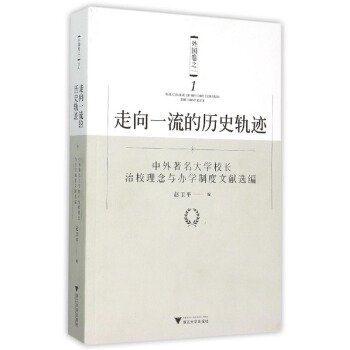

具体描述
内容简介
This book aims to investigate structural priming in L2 learners with a focus on Chinese College-level EFL(English as a Foreign Language)learners’ production of English dative constructions.Specifically,it is intended to address three issues: 1)whether structural priming occurs in L2 production; 2)whether L2 structural priming has a long-term effect and consequently affects the pattern of subsequent production of syntactic constructions; and 3)whether and to what extent the short-term and the long-term effect of L2 structural priming are mediated by linguistic and psycholinguistic factors.The overarching goal of the present study is to explore whether and under what conditions structural priming has a role to play in L2 learning of grammar constructions,thereby enriching our understanding of the psycholinguistic process involved in L2 learning.For this purpose,four empirical st udies were conduct ed.Experiments 1 and 2 were designed to probe the short-term effect of structural priming,that is,whether structural priming occurs when the prime sentence immediately precedes the target sentence.One hundred and thirty-two Chinese EFL learners who represented two English proficiency levels(intermediate vs.advanced)participated in the experiments,72 for Experiment 1 and 60 for Experiment 2.Experiment 1 employed a written sentence completion task whereas Experiment 2 a spoken picture description task.The results show that structural priming did occur with both the prepositional dative(PD)and the double object dative(DO)constructions,and that the L2 learners,regardless of their language proficiency,were more likely to reuse a particular construction(PD/DO)in the target responses if it had been previously produced in the prime sentences.Moreover,the magnitude of structural priming was found to be modulated by L2 proficiency.The advanced learners exhibited stronger priming effects for the DO construction than their intermediate counterparts.However,no evidence was obtained for the proficiency effect on the priming of the PD construction.Furthermore,the priming effects gave rise to between-verb variations.That is,verbs which are more strongly associated with a construction were more likely to be primed into the construction and resist the priming of the alternative construction.In addition,the results derived from Experiment 1 were basically consistent with those from Experiment 2,in spite of the employment of different tasks in the two experiments.This suggests that syntactic priming in L2 production is robust and reliable rather than task-specific.Of interest is that,compared with the sentence completion task,the priming effects in the picture description task were stronger.
Experiments 3 and 4 investigated the long-term effect of structural priming in L2 production by means of written sentence completion tasks.In the first part of each experiment,learners’ experience of producing the PD and DO constructions was manipulated in ways that enabled them to produce a particular proportion of PD and DO constructions.Then the learners were given the opportunity to produce either the PD or DO construction without being provided with further primes.The experiments yielded four major findings.Firstly,syntactic priming in L2 production has produced a long-term effect.The L2 learners’ experience of producing the DO construction earlier in the experiment increased the rates at which the construction was produced later in the experiment compared with the baseline condition.Nevertheless,there is a lack of evidence for the long-term priming effect on the production of the PD construction.Secondly,the long-term priming effect is modulated by the relative frequency with which each construction is produced earlier in the experiment.It turned out that the experience strongly skewed towards the DO construction significantly increased the likelihood of producing the construction and at the same time suppressed the production of the competing PD construction.Thirdly,the frequency effect on the subsequent production of the dative constructions persists even across the changing tasks.Finally,the long-term effect is insusceptible to the temporary distribution of the tokens of each construction within the experiment.
The findings of the present study have empirically verified the occurrence of structural priming in L2 production and confirmed its potentially beneficial role in L2 learning of grammar constructions.More generally,the findings suggest that the implicit learning from usage accentuated by the usage-based theories is also operative in L2 acquisition.
目录
Contents序
前言
Abstract
Acknowledgements
Chapter 1 Introduction
1.1 Research Orientation
1.2 Structural Priming:The Target of Research
1.3 Rationale
1.3.1 Theoretical Values
1.3.2 Pedagogical and Methodological Values
1.4 Key Research Questions
1.5 Structure of the Book
Chapter 2 L2 Learning of Grammar Constructions:A Usagebased Perspective
2.1 Defining the Usage-based ModelContents
序
前言
Abstract
Acknowledgements
Chapter 1 Introduction
1.1 Research Orientation
1.2 Structural Priming:The Target of Research
1.3 Rationale
1.3.1 Theoretical Values
1.3.2 Pedagogical and Methodological Values
1.4 Key Research Questions
1.5 Structure of the Book
Chapter 2 L2 Learning of Grammar Constructions:A Usagebased Perspective
2.1 Defining the Usage-based Model
2.2 Constructions
2.2.1 What Is Construction
2.2.2 Construction as a Prototype Category
2.2.3 Schematization and Entrenchment
2.2.4 Type Frequency vs. Token Frequency
2.3 The Usage-based Perspe+ctive of Construction Learning
2.3.1 Associative Learning Mechanisms
2.3.2 The Connectionist Models
2.3.3 L1 Acquisition vis-à-vis L2 Acquisition
2.4 Problems with the Usage-based Perspective of SLA
2.5 Summary
Chapter 3 Syntactic Priming and Language Learning
3.1 An Overview of Syntactic Priming
3.1.1 Representational Underpinning of Syntactic Priming
3.1.2 Techniques in Syntactic Priming Research
3.2 Mechanisms of Syntactic Priming
3.2.1 The Activation Account
3.2.2 Syntactic Priming as a Form of Implicit Learning
3.2.3 Strengthening of Message-to-syntax Mappings
3.3 Constraints on Syntactic Priming Effects
3.3.1 Constraints on Short-term Effects
3.3.2 Constraints on Long-term Effects
3.4 Application of Syntactic Priming to Language Acquisition
3.4.1 Syntactic Priming in Children
3.4.2 Syntactic Priming in L2 Learners
3.5 Summary
Chapter 4 Exploring Syntactic Priming in L2 Production:Issues and Predictions
4.1 Target Structure of the Study:English Dative Constructions
4.1.1 A Sketch of English Dative Constructions
4.1.2 Constraints on Dative Alternation
4.1.3 Interaction between Verbs and Constructions
4.1.4 A Contrastive Analysis of English and Chinese Dative Constructions
4.1.5 Empirical SLA Studies on Dative Alternation
4.2 Synthesizing Syntactic Priming with L2 Learning of Grammar Constructions
4.3 Issues and Predictions Concerning Syntactic Priming in L2 Production
4.3.1 Possibility of the Occurrence of Syntactic Priming in L2 Production
4.3.2 Factors Constraining the Short-term Effect of Syntactic Priming
4.4 Persistence of Syntactic Priming in L2 Production
4.4.1 The Long-term Effect of Syntactic Priming
4.4.2 Factors Affecting the Long-term Effect
4.5 Research Questions and Hypotheses
4.6 Summary
Chapter 5 Syntactic Priming in L2 Learners
5.1 Experiment 1
5.1.1 Method
5.1.2 Results and Discussion
5.2 Experiment 2
5.2.1 Method
5.2.2 Results and Discussion
5.2.3 An Omnibus Analysis of Experiments 1 and 2
5.3 Experiment 3
5.3.1 Method
5.3.2 Results and Discussion
5.4 Experiment 4
5.4.1 Method
5.4.2 Results and Discussion
5.5 Summary
Chapter 6 General Discussion and Conclusions
6.1 Characterizing Syntactic Priming in L2 Production
6.1.1 Short-term Effect of Syntactic Priming
6.1.2 Influences on the Short-term Effect
6.1.3 The Long-term Effect of Syntactic Priming
6.2 Conclusions
6.2.1 A Recapitulation of Major Findings
6.2.2 Implications for L2 Pedagogy
6.2.3 Limitations of the Current Study and Directions for Further Research
References
Appendix 1 Stimuli Used in Experiment 1
Appendix 2 Primes Used in Experiment 2
Appendix 3 Samples of the Pictures Used in Experiment 2
Appendix 4 Stimuli Used in Experiments 3 and 4
List of Figures
Figure 2.1 Linguistic Constructions in the Complexity/Schematicity Continuum―Adapted from Roehr(2005)
Figure 5.1 Production of Targets by Prime
Figure 5.2 Interaction between Prime Type and Target for the Intermediate Group
Figure 5.3 Interaction between Prime Type and Target for the Advanced Group
Figure 5.4 Production of DO Target by Verb in the Baseline
Figure 5.5 Production of DO Targets in Each Prime Condition by Verb(for Intermediates)
Figure 5.6 Production of DO Targets in Each Prime Condition by Verb(for Advanced Learners)
Figure 5.7 The Sequence of the Events in the Picture Description Task
Figure 5.8 Production of Targets by Prime Type
Figure 5.9 Interaction as a Function of Prime Type* Target for the Intermediate Group
Figure 5.10 Interaction as a Function of Prime Type* Target for the Advanced Group
Figure 5.11 Interaction of Prime Type by Proficiency Level on the Production of DO Target
Figure 5.12 Interaction of Prime Type by Proficiency Level on the Production of PD Target
Figure 5.13 Production of DO Target as a Function of Prime Type* Task
Figure 5.14 Production of PD Target as a Function of Prime Type* Task
Figure 5.15 Production of Targets in the Priming Phase by Exposure Condition
Figure 5.16 Production of Targets by Production Phase
List of Tables
Table 2.1 English Argument Structure Constructions
Table 3.1 Summary of L2 Syntactic priming Studies Targeting Dative Constructions
Table 4.1 Examples of Force-dynamic Relation
Table 4.2 Classification of Verbs according to the Semantic Compatibility
Table 4.3 Collexemes Distinguishing between the Ditransitive and the To-dative
Table 4.4 Test Verbs of the Present Study
Table 5.1 Grouping of Participants Based on Years of L2 English Learning and Scores on English Proficiency Test
Table 5.2 Frequencies of Occurrence of Responses in the Prime Conditions
Table 5.3 Mean Proportions of Targets by Prime* Proficiency Level
Table 5.4 Results of the Mixed Repeated Measures MANOVA
Table 5.5 Pairwise Comparisons of the Mean Proportions of Targets by Prime Type
Table 5.6 Effect of Prime Type* Proficiency Level on the Production of DO and PD Targets
Table 5.7 Pairwise Comparisons of the Means of Targets by Prime Type* Proficiency Level
Table 5.8 Pairwise Comparisons of Relative Proportions of Targets by Prime Type
Table 5.9 Pairwise Comparisons of the Means of Targets as a Function of Proficiency Level
Table 5.10 Pairwise Comparisons of OT Targets between the Prime Conditions
Table 5.11 Production of Targets by Verb in the Baseline Condition
Table 5.12 Exemplification of the Null Hypothesis H0
Table 5.13 Observed vs. Expected Frequencies for Verbs as a Function of Prime Type
Table 5.14 Grouping of Participants Based on Years of L2 English Learning and Scores on English Proficiency Test
Table 5.15 Frequencies of Each Type of Responses by Prime Condition* Proficiency Level
Table 5.16 Production of Targets as a Function of Prime Type* Proficiency Level
Table 5.17 Results of the Mixed Repeated Measures ANOVA
Table 5.18 Pairwise Comparisons of the Mean Proportions of Targets by Prime Type
Table 5.19 Pairwise Comparisons of Relative Proportions of Targets by Prime Type
Table 5.20 Summary of Results for an Omnibus Analysis of Experiments 1 and 2
Table 5.21 Design Structure for Experiment 3
Table 5.22 Raw Frequencies of Targets of Each Category
Table 5.23 Means of Targets as a Function of Production Phase* Exposure Condition
Table 5.24 Pairwise Comparisons of Targets by Production Phase
Table 5.25 Results of the MONOVA Test on the Production of PD and DO Targets in the Priming Phase as a Function of Exposure Condition
Table 5.26 Post hoc Tests of the Effect of Exposure Condition(Tukey)on the Production of PD and DO Targets in the Priming Phase
Table 5.27 Pairwise Comparisons of the Means of PD and DO Targets in Each Exposure Condition
Table 5.28 Production of Targets as a Function of Exposure Condition* Production Phase
Table 5.29 Results of the MANOVA Test on the Production of DO and PD Targets as a Function of Exposure Condition
Table 6.1 Production of DO Targets Following DO Primes by Trials
精彩书摘
《结构启动及第二语言语法构式学习:以中国学习者产出英语双及物构式为例》:Sentence recall tasks (Potter & Lombardi, 1998) are preferred when the priming research is on the structures that are difficult to elicit through picture description or sentence completion (e.g., Chang et al., 2003; Fox Tree & Meijer, 1999; Griffin & Weinstein-Tull, 2003; Lombardi & Potter, 1992; Potter & Lombardi, 1990, 1998).In the technique, partiapants silently read a sentence on the computer screen which is presented one word at a time.Subsequently they perform a distracter task and repeat the original sentence aloud.Given the difficulty associated with remembering the surface structure, the high speed of presentation and the intervening distracter task, participants often change the structure of the sentence when they recall it.So the condihons of the task are manipulated so as to determine what factors lead participants to incorrectly recall or paraphrase the target constructions.A detailed description of the technique is referred to Potter & Lombardi (1998).
The novel confederate scripting distinguishes itself from other techniques in that it explores syntactic priming in dyadic interaction rather than targets individual speakers (e.g., Branigan, Pickering & Cleland, 2000; Hartsuiker et al., 2004; McDonough, 2006).The technique was invented by Branigan and colleagues to investigate whether speakers tend to produce the syntactic form which they just heard their interlocutors use, that is, whether speakers also CO-ordinate syntactic structure in dialogue.
……
前言/序言
用户评价
阅读完这本书,我仿佛经历了一次关于二语语法习得的“认知革命”。过去我总是习惯于从错误分析的角度去审视学习者的问题,但这本书通过“结构启动”这一前沿视角,将焦点从“错误”转向了“倾向性”和“潜在能力”。作者对“双及物构式”这一在英语中高频但对非母语者构成挑战的结构所下的功夫尤为令人印象深刻。书中对不同句法结构(如主动语态和被动语态)的启动效果差异的对比分析,为理解学习者在不同语境下对句法框架的选择偏好提供了坚实的经验基础。更让我感到惊喜的是,作者在结论部分对未来研究方向的展望,显示出对该领域发展的高度敏感性和前瞻性。这本书不仅仅是总结了既有研究,更像是为后续的研究铺设了一条清晰的跑道,激发了我对如何将结构启动理论应用于其他复杂语法结构学习的兴趣。
评分这本书的结构安排非常巧妙,从宏观的理论背景铺陈,到微观的实证数据挖掘,再到最终的教学启示总结,层层递进,逻辑性极强。作为一名长期关注语言教学效果的研究者,我特别关注书中关于“短期高强度输入能否有效抵消长期母语干扰”的探讨。作者通过对中国学习者口语和笔语样本的对比分析,有力地论证了结构启动在不同产出模式下的差异化表现。特别是关于“非直接经验的结构启动能力”的论述,拓宽了我们对语言习得情境的界定。这本书的价值在于,它提供了一个严谨的工具箱,帮助我们量化和评估教学干预的实际效果,而不仅仅是停留在主观感受层面。对于渴望将实证研究成果转化为有效教学策略的教育工作者来说,这本书无异于一份详尽的路线图,它告诉我们如何科学地设计语言教学材料,以最大化地利用学习者已有的语言知识结构,促进新结构的习得。
评分这本书的语言风格和论证逻辑非常引人入胜,它不像很多学术著作那样干巴巴地堆砌术语,而是充满了探索的热情。作者在探讨“结构启动的持续性与强度”时,穿插了一些非常贴近课堂教学和日常语言使用的例子,这让复杂的问题变得直观易懂。我尤其欣赏作者对于“学习者产出中的构式迁移”的讨论,这部分内容为我们理解学习者是如何从模板化语言使用过渡到灵活运用提供了新的视角。在对比分析了不同教学干预措施对双及物构式启动效果的影响后,我深刻认识到,仅仅是让学生接触大量包含该构式的语料还远远不够,如何设计“有目的的、具有启动潜力的”输入环节,才是提升学习效率的关键。这本书给我最大的启发在于,它提醒我们不能将语言学习视为孤立的知识点学习,而应将其视为一个动态的、受先前经验强烈影响的过程。对于一线教师而言,这本书提供了诸多可以立即应用于课堂实践的理论指导,极具指导意义。
评分这本书的选题角度非常新颖,聚焦于结构启动(Structural Priming)这一语言习得中的关键现象,并将其与第二语言学习者的语法习得,特别是双及物构式(Ditransitive Construction)的学习联系起来,视角很独特。我原本以为这类理论性很强的著作会过于晦涩难懂,但阅读过程中发现作者在理论阐述和实证研究之间找到了一个很好的平衡点。书中对结构启动机制的介绍清晰明了,帮助我理解语言输入是如何潜移默化地影响学习者未来产出的。特别是针对中国学习者这一特定群体,作者深入分析了他们在使用英语双及物构式时可能遇到的困难,并结合中国母语的语法特点进行了对比分析,这使得研究结论更具针对性和实用价值。对于我这样长期关注二语习得,尤其是语法发展路径的研究者来说,这本书无疑提供了一个扎实的理论框架和丰富的实证数据支撑,让我对“语言学习不仅仅是规则记忆”有了更深刻的体会。作者对实验设计的严谨性描述,以及对结果统计分析的细致呈现,都体现了极高的学术水准,让人不得不佩服其扎实的功底。
评分这本书的深度和广度都超出了我的预期。它不仅停留在描述“中国学习者会犯什么错误”,更深层次地挖掘了“为什么会这样错误”以及“如何更有效地引导他们摆脱错误定式”。关于双及物构式,书中详尽地剖析了英语中“施事-受事-宾语”的结构特点与汉语中相关表达习惯的差异,这种跨语言视角的引入极大地丰富了对学习者认知过程的理解。在处理“时间/频率”对结构启动影响的章节里,作者展现了极高的计量和分析能力,通过细致入微的数据爬梳,揭示了许多肉眼难以察觉的语言习得规律。我个人认为,这本书对于那些希望从事实证语言研究的学生而言,是一本绝佳的范本,它清晰地展示了如何将一个宏大的理论概念(结构启动)拆解成可操作的实验变量,并最终得出具有解释力的结论。它不是一本轻松读物,但绝对是值得反复研读的宝藏。
相关图书
本站所有内容均为互联网搜索引擎提供的公开搜索信息,本站不存储任何数据与内容,任何内容与数据均与本站无关,如有需要请联系相关搜索引擎包括但不限于百度,google,bing,sogou 等
© 2025 book.idnshop.cc All Rights Reserved. 静思书屋 版权所有

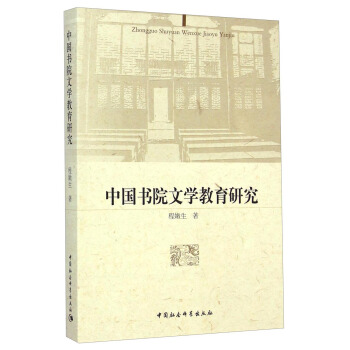
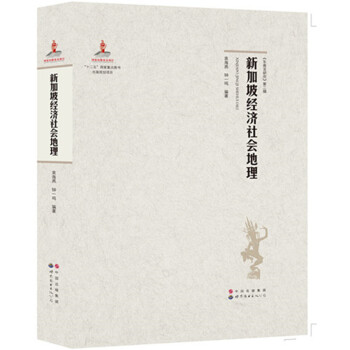



![古典学评论(第1辑) [Classical Review] pdf epub mobi 电子书 下载](https://pic.tinynews.org/11676171/553f0ef8Nff89b285.jpg)


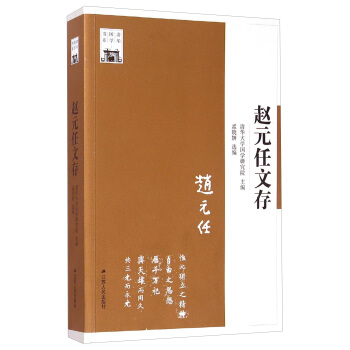

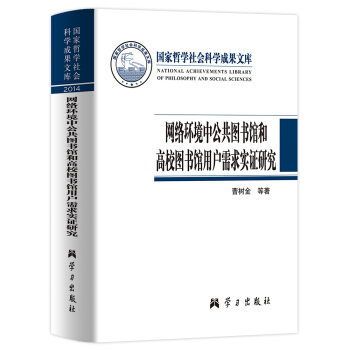

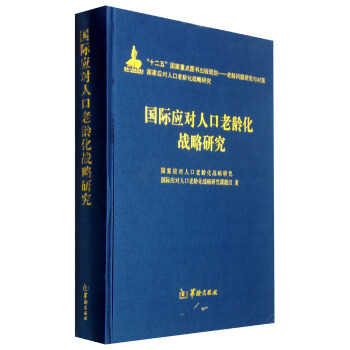


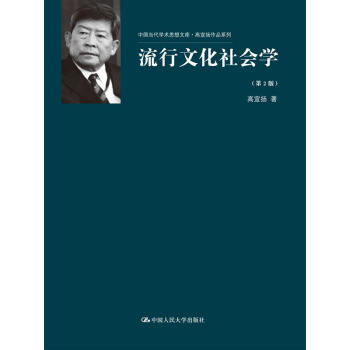

![中国职业教育年鉴(2015) [China Vocational Education Yearbook 2015] pdf epub mobi 电子书 下载](https://pic.tinynews.org/11773222/560bd074N9c0c718e.jpg)
